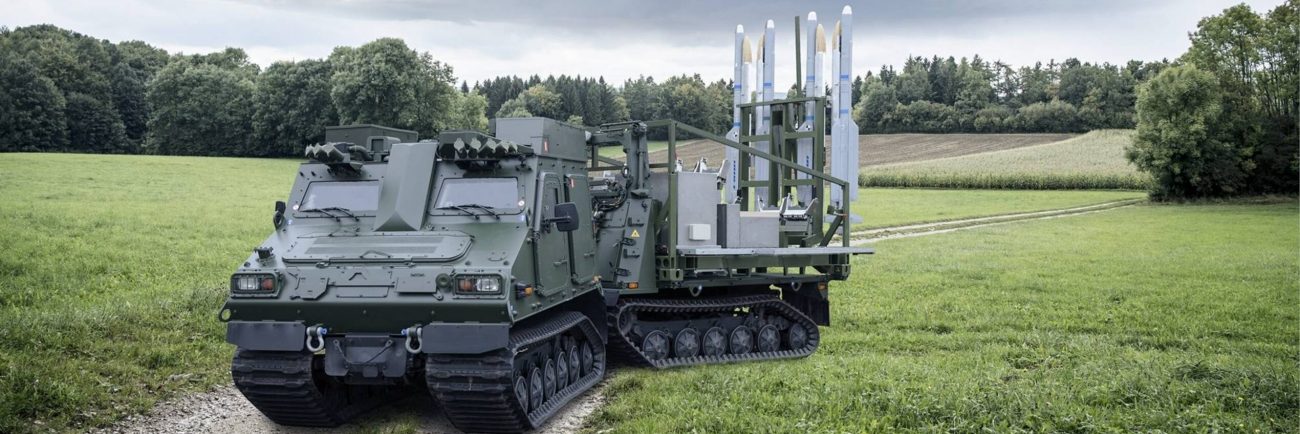Germany’s defense minister, Boris Pistorius, on November 21, announced another military aid package for Ukraine worth €1.3 billion ($1.42 billion), which comprises four additional IRIS-T air defense units.
This is apart from the eight IRIS-T systems, three of which have been delivered. Ukraine uses them mainly to guard against Russian air-launched missile attacks. Other ordnance includes 20,000 155-mm artillery shells, 60 Unmanned Aerial Vehicles (UAV) for surveillance and reconnaissance purposes, anti-tank mines, and counter-UAV systems.
Pistorius noted that the artillery shells are apart from the 140,000 155-mm rounds Germany has pledged to deliver next year. Pistorius told journalists in the presence of his Ukrainian counterpart Rustem Umerov: “I am sure this will help you in your fight against Russian aggression. This underlines that we stand with Ukraine sustainably and reliably,” he was quoted in a report by Reuters.
‘No Immediate Relief’
Germany is the second-largest contributor of defense assistance to Kyiv after the US, where, besides the IRIS-T AD systems, its signature assistance has been the supply of Leopard main battle tanks (MBT).
According to data tracked by the Kiel Institute for the World Economy, it has channeled more than €17 billion in military aid to Ukraine.
The arms assistance, however, is not immediate and will take time to fructify and reach Ukrainian hands, possibly over the next year, since they will be procured afresh from the industry.

The long-term nature of the arms supplies has not been assessed to suit the Ukrainian needs. Russia exploited the destruction of Kyiv’s defense industrial base, its complete dependence on the West for arms, and Western industries’ delay in keeping up with its demands to strengthen its position.
It built up its defenses by constructing the multi-layered anti-armor defensive line in the Ukrainian territories it occupies between late 2022 and early 2023 when the US and NATO were still deciding on sending tanks and heavy armor to Ukraine.
This resulted in the failed Ukrainian counteroffensive. Ukrainian commentators imply Moscow might repeat the tactic by the time the latest batch of weapons is manufactured and reaches Ukraine.
A serving military expert who did not wish to be quoted told the EurAsian Times that what Germany promised to Ukraine would be delivered in an unknown time frame. There is nothing to be excited about. By the time Kyiv gets these weapons, the war might be well over.
Western Military Factories Struggling
Artillery rounds, Kyiv’s primary military requirement, are the hurdle behind international arms donations from the recipient (Ukraine) and the sender (US and Europe).
The primary land war entails heavy artillery usage, which translates into Ukraine using nearly 1,000 shells a day (upwards of 50,000 rounds a month). In contrast, Western industries can churn out only 15,000 to 20,000 ammunition.
This is owing to their defense industrial base never being geared for large-scale conventional wars after the Cold War and the collapse of the Soviet Union, leading to decades of under-investment in high-production capacity.
Moreover, recent fresh investments made by the US and NATO countries for expanded arms manufacturing would not immediately materialize given the time required to set up the new infrastructure and firm up supply chains.
This was reflected in Pistorius’s November 14 statement, which questioned the wisdom of setting March 2024 as the target for supplying Ukraine with 1 million artillery shells amid reports of the EU possibly overshooting the deadline. Arriving at a meeting of EU defense ministers in Brussels, Pistorius said, “I didn’t promise 1 million rounds, and that was on purpose. The right question would be whether 1 million was a realistic goal,” Pistorius told reporters.
Arms Donations to Ukraine’s Draining West’s Own Armory
Apprehensions among their militaries also constrain Europe and the US since most of the immediate arms donations to Ukraine have gone from their stockpiles, impacting their defense preparedness.
It can, therefore, be assumed that the latest announcements would take time to crystallize into the actual war wares reaching Ukraine, by which time Russia will have made more irreversible gains. For instance, of Germany’s first €100 billion fund to arm Ukraine, announced three days after Russia attacked, two-thirds were allotted only by the end of 2022.
- The author can be reached at satamp@gmail.com
- Follow EurAsian Times on Google News